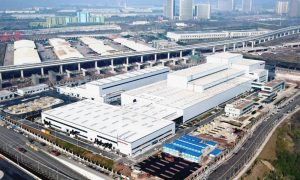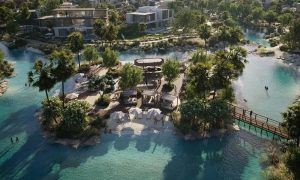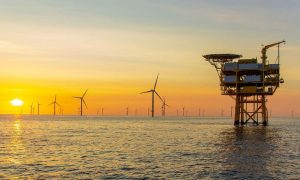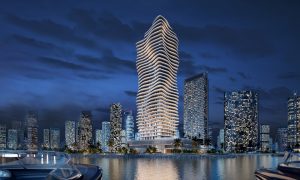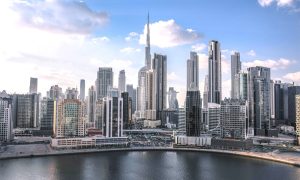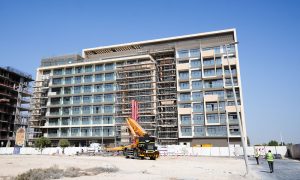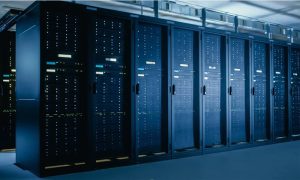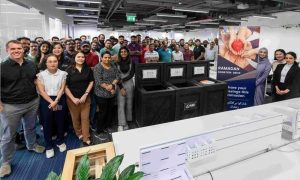Project Profile: Noor Abu Dhabi Solar Plant
Big Project ME profiles the Noor Abu Dhabi solar plant, the world’s largest single solar plant and a benchmark for renewable energy across the globe
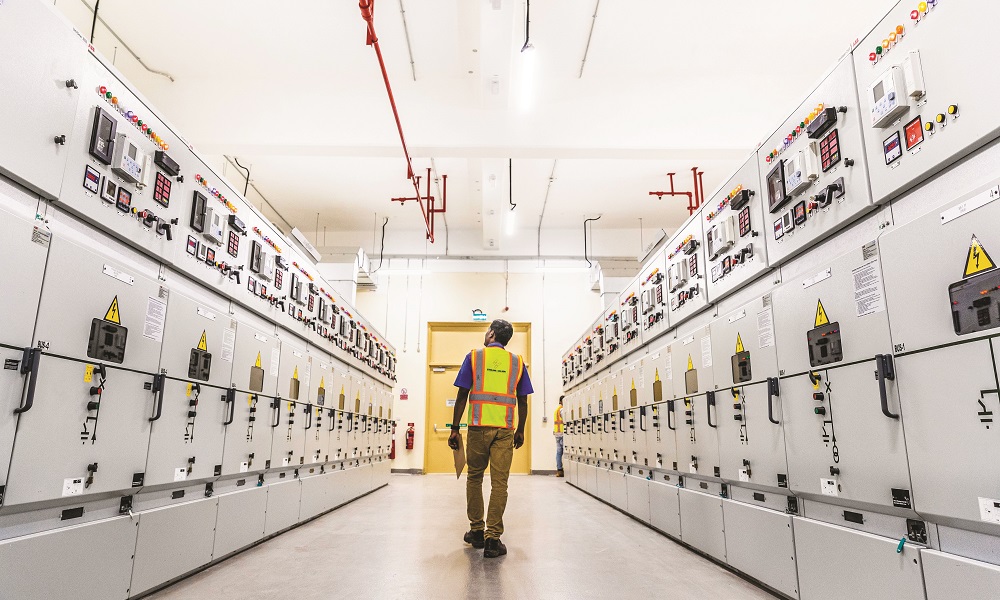
Last July, on the eve of the United Nations Abu Dhabi Climate Meeting, the Emirates Water and Electricity Company (EWEC) announced that the massive Noor Abu Dhabi solar plant had commenced commercial operations, marking a significant moment in history for renewable energy advocates and for sustainable energy as a whole.
Not only is the project the world’s largest single solar plant, but it will offset Abu Dhabi’s CO2 emissions by one million metric tons, the equivalent of taking 200,000 cars off the roads. With 3.2 million solar panels installed across an eight square kilometre site and producing 1.2GW of power, the Noor Abu Dhabi solar plant is expected to provide enough power to meet the equivalent demand of 90,000 people.
Built at a cost of $871.1 million, the plant is located at Sweihan in Abu Dhabi and electricity generated by the facility will be sold to EWEC under a 25-year power purchase agreement. The project was developed as a joint venture between the Abu Dhabi Power Corporation and a consortium of Japan’s Marubeni Corp and China’s Jinko Solar Holding.
Construction of the solar plant was completed within 23 months, as was originally planned in the construction schedule. In order to reach this milestone on time, more than 2,900 people worked on site at peak construction.
With the plant now operational for almost a year, Big Project ME spoke to EWEC to find out how the mammoth renewable energy project came to be, what sort of tangible benefits it will bring to Abu Dhabi, and the UAE as a whole, and what sort of challenges were encountered during the construction and development process.
Now that the solar plant has been in operation for almost a year, what have been some of the biggest tangible benefits realised?
Noor Abu Dhabi directly supports the UAE’s Vision 2021, which has set out diverse social, economic, and sustainable objects for the country. The project serves as an important benchmark for what we can achieve when it comes to large-scale clean energy projects. It also highlights how the UAE economy is successfully adopting new economic models, and capitalising on global economic partnerships.
Since the commencement of operations at Noor Abu Dhabi, the plant has provided a range of benefits. The first of these is the significant deployment of state-of-the-art monocrystalline photovoltaic (PV) module technology with a capacity of 1.2 GW.
The use of this technology has meant that the solar energy produced is at a competitive tariff compared to alternative resources. Importantly, Noor Abu Dhabi is helping to reduce carbon dioxide emissions by 1 million metric tons per year, the equivalent of removing 200,000 cars off the roads.
The cost competitiveness of the winning bid for Noor Abu Dhabi also highlights the very keen interest of global solar developers in Abu Dhabi as one of the world’s leading jurisdictions for solar energy development. It has enabled EWEC to discuss further development of photovoltaic (PV) installations with national, regional, and international partners.
What were some of the biggest challenges encountered during the construction and development of the plant, and how were they overcome?
Building mega-installations, such as Noor Abu Dhabi, in the midst of a desert environment, evidently brings a range of challenges to overcome. The timeline for the development and construction of the plant was very ambitious, and it was also important to ensure we could capture the efficiency and sector cost savings.
EWEC oversaw a very fast procurement process, just 13 months from the launch of the RFP to financial close, and from that date worked with our partners, who were able to construct the plant in just 18 months.
During the construction phase, ensuring that PV panel structures were securely fastened, given the nature of desert geology, was a particular focus. Noor Abu Dhabi is designed in a curved pattern, so the need for the 3.2 million panels to remain unified in their position was paramount during the construction process.
To achieve this, engineers first used a fleet of drones to scan the eight-kilometre area and identified the position of over 600,000 ground screws. This data was then transferred to an unmanned machine, which drilled into the surface, and then a second machine drilled the ground poles into position using a precise torque. This process ensured that the whole solar plant was secured against the shifting geological nature of the Arabian Desert.
The work and effort of the multinational teams involved in the project enabled Noor Abu Dhabi to be completed on time and on budget.
What sort of environmental and logistical issues had to be resolved during the construction and development process?
For every new project EWEC undertakes, we apply a rigorous process – in partnership with many stakeholders, including the Environment Agency – Abu Dhabi (EAD) – to ensure we have in place the highest standards when considering and minimising the environmental impact that the location and construction of the project may have.
For Noor Abu Dhabi, which covers an 8km2 site, this involved conducting a census of local wildlife in the area, which includes the presence of the endangered spiny tailed ‘dhub’ lizard. The lizards – nicknamed the ‘little dragon’ of the desert – face a major threat in the destruction of their habitat through development. Working closely with EAD, we worked to remove 150 dhub lizards from the site before commencing construction and relocated them to a nearby habitat.
Two years on from that process, we are continuing to work closely with the EAD to ensure that these lizards continue to enjoy their desert home.
Can you discuss the construction process for the plant? Why was the contractor chosen and did they deliver the project as per the contract specifications?
EWEC have a robust and detailed RFP process for all projects and intensively conducts a technical evaluation followed by the commercial evaluation process to select the best proposal. The contractor for the construction of Noor Abu Dhabi was Sterling & Wilson.
The contract was awarded on the basis of the strength of their credentials in developing and delivering large-scale PV plant projects, alongside providing ongoing support for the subsequent operation of the plant. We closely partnered with them during the construction phase, which saw a multi-national workforce with over 2,900 people working onsite during peak construction. This close collaboration ensured the project was completed on time and on budget.
Can you outline the makeup of the plant and why the materials utilised were chosen?
Throughout the robust and detailed RFP process, EWEC focussed on ensuring the technology to be used at Noor Abu Dhabi would be highly efficient in production output, and monocrystalline photovoltaic (PV) module technology provided this key requirement. Using an innovative layout, these modules are supported on a fixed-tilt structure, enabling maximum exposure to solar rays and, therefore, providing highly efficient output.
In addition, Noor Abu Dhabi is constructed in a sweeping design, allowing for sunlight to catch every panel as it moves throughout the course of the day. Any large-scale piece of energy infrastructure in the GCC has to withstand unique climate conditions, particularly summer temperatures, whilst also having to operate at the height of operational energy efficiency. As such, our design process and material selection procedure for Noor Abu Dhabi was robust and comprehensive, to ensure we met these challenges. As an example, the central inverters installed can operate at temperatures between -20°C and +60°C and a relative humidity from 0% to 100%.
What protective measures have been put in place to mitigate against maintenance and performance issues?
Solar panels require a different level of maintenance. One of the critical issues affecting solar plants anywhere, but particularly in the desert, is dust. Left uncleaned, PV panels will quickly build up a surface layer of dust that prevents light from passing through, thus reducing the efficiency of the solar panel.
In order to meet this challenge, Noor Abu Dhabi has sweeping machines, or ‘robots’, which wipe each panel free of sand – and other forms of sediment – that can impede the energy efficiency of the module. These machines do not use water in the cleaning process and are able to clean the 3.2 million panel installed over the eight square kilometre site on a regular basis.
By making key investments in critical pieces of technology, we have ensured that Noor Abu Dhabi has strong operational efficiency that allows us to provide a consistently high level of energy output.
How effective has the plant been since it began operations, with regards to emissions and energy production? What can be improved and what has surpassed expectations?
Noor Abu Dhabi provides solar power through innovative PV production capabilities and rigorous maintenance processes to ensure a high level of efficiency. We are continually looking at improvements we can make and sharing this knowledge across the sector.
Can you discuss the plant’s role in the UAE’s energy strategy? How has its performance since operation shaped the future of the strategy?
The UAE is aiming to increase its clean energy share from 25% to 50% over the next thirty years, and to minimise its carbon footprint by 70%, as set out in the UAE’s Energy Strategy 2050.
EWEC will have an expected capacity of 50% of Abu Dhabi’s energy needs from renewable energy sources by 2030 while reducing the carbon intensity by more than 70% compared to 2015.
Noor Abu Dhabi continues provide key learnings for future PV plants that are currently under development within the UAE and internationally. As further solar plants are constructed, we are anticipating a growth in efficiency of production outputs.
What scope is there for expansion of the plant?
EWEC has a strategic plan to increase the use of sustainable energy production technologies. The next key project in this plan is the Al Dhafra PV project, which will cover an area of 20 square kilometres, providing up to 110,000 households in the UAE with electricity. It will reduce CO2 emissions by over 1.6 million metric tonnes per year – equal to removing 330,000 cars from the road. As such, Noor Abu Dhabi represented the first phase of solar energy production in the UAE.
Finally, what are some of the key lessons learnt from this plant that will inform the construction and development of future plants?
The construction and commencement of operations at Noor Abu Dhabi has been enabled through investments in highly efficient technology, systems and processes, from the state-of-the-art monocrystalline modules that receive power from the sun, to the innovative machinery used in our construction processes, to the cleaning robots that ensure the plant remains at the height of efficiency when operating in harsh climate conditions.

